As I drive down to 400m below sea level, the landscape becomes drier and drier. The temperature rises and the stone desert looks like a hostile environment in which nothing ever grows or stays alive. I love those barren landscapes, a proof of the overpowering forces of nature.
I am on my way to Ein Gedi, an Israeli oasis on the west side of the Dead Sea. Hotels and therapeutic resorts spruce up, ready to accommodate the thousands of tourists looking for mud, sulphur baths and various health treatments. I, however, am looking for that once-in-a-lifetime experience: floating in the Dead Sea!
What is the Dead Sea?
Sitting at 430 meters (1410 ft) below sea level, the Dead Sea is the lowest natural place on earth. Surprisingly enough, it is not really a sea, but rather a lake that is bordered by Israel, Jordan and Palestine. It is one of the world’s saltiest places on earth. The salinity makes for a harsh environment in which plants and animals cannot flourish, hence its name “Dead Sea”.
Because the Dead Sea contains 33 per cent salt and a wealth of magnesium, calcium, potassium and other minerals, it is thought to have a remarkable effect on psoriasis and other skin conditions. It has been renowned for its therapeutic affects since antiquity and the area has become a major centre for health research and treatment.
How to get to the Dead Sea?
You can either get to the Dead Sea from Israel or Jordan. I visited the Israeli side, so my article will focus on that part. If you’d like to find information on how to access from Jordan, check out this article.
Many of the beaches on the Dead Sea are privately owned and charge an entry fee. This is partly due to the constantly changing level of the Dead Sea (each year it shrinks by 1-1.5 meters) meaning that every few years, the beach is in a new location and the supporting services also must move.
1. By shuttle bus
If you are relying on public transport, then the easiest way to get to the Dead Sea is by shuttle bus from Tel Aviv or Jerusalem. The shuttle will take you to one of the private resorts at the banks of the Dead Sea where you have +/- 7 hours to enjoy the facilities before heading back. Check the Dead Sea shuttle bus link for information on prices and time tables.
2.By car
I went to Ein Gedi, an oasis and nature reserve on the west banks of the Dead Sea.It takes about 1h30 from Jerusalem or 2 hours from Tel Aviv. This is if you are taking the route via the West Bank. (I was visiting with my Israeli friend and she didn’t feel safe to go via Palestinian territory, so we ended up driving the long route around via Arad)
I wasn’t very keen on going to a private beach via a spa or hotel, but this is really the easiest option if you want access to all facilities.
Tips for floating in the Dead Sea
I never felt really comfortable in water, so I asked my friend Ursula to go in first, just to make sure the whole “floating in the Dead Sea” thing isn’t just a myth… Turns out it isn’t. Ursula is floating peacefully on the salty surface. Reassured and putting on a brave face, I make my way into the water. My first impression is, that apart from being salty, it is a very oily affair too! I lean backwards, still not 100% at ease, until my back touches the water surface. And then, finally, I float…well, for a few seconds at least… With the little movement the small waves create, I soon manage to splash salt water into my eyes. Trust me, you do not want that!
Do I look relaxed in this picture? Nope, didn’t think so!
If you want a more relaxing experience than me, make sure you follow these tips:
- Due to the layer of crystals covering the bottom of the sea, walking in and out of the water can be challenging if you’re barefoot. Bring some flip-flops or old sandals. (Don’t bring on your most beautiful footwear and swimming gear, the salt might damage it)
- Do not shave for a few days before! The salt water will cause a lot of pain if you have any cuts or open wounds.
- Don’t try to swim. Just get in the water, walk till you can squat and gently lie down
- Don’t splash or move too quickly! It’s extremely painful to get water in your eyes!
- Don’t taste the water, it is way too salty and tastes horrible.
- Float for 5-10 minutes, the salt water might be good for your skin, but not for a long time. Your skin will be bone-dry if you stay longer!
- Shower as soon as you’re getting out to avoid your skin getting irritated.
- Cover yourself in mud. You can buy a pack of Dead Sea mud at any spa or hotel shop . Apply the mud to your body, let it set in for a while, then rinse it off under the shower. The minerals will do wonder for your skin and hair! Not so much for your bikini, so wear an old one!
After the floating and mud experience, I head for the sulphur baths of the Ein Gedi Spa. Sulphur baths are a very well known treatment for arthritis and all sorts of pain relief.
Now, I want you to bear that in mind when you enter those baths, cause your first reaction will be one of nausea and utter disgust. Turns out sulphur has the not so pleasant side-effect that it smells like rotten egg! I soak for about 15 minutes in the hot, though still smelly, waters.
I’m still not sure whether I enjoyed my experience at the Dead Sea to be honest. OK, the salt water stinging my eyes didn’t help, but at the end of the day, I leave the Dead Sea with the feeling that my hair and skin might be damaged for life and I am also convinced that I am spreading a horrible whiff!
Not quite the pampering I had in mind when setting off…
Have you been floating in the Dead Sea? Have you ever pictured something that turned out quite different? Looking forward to reading it in the comments!

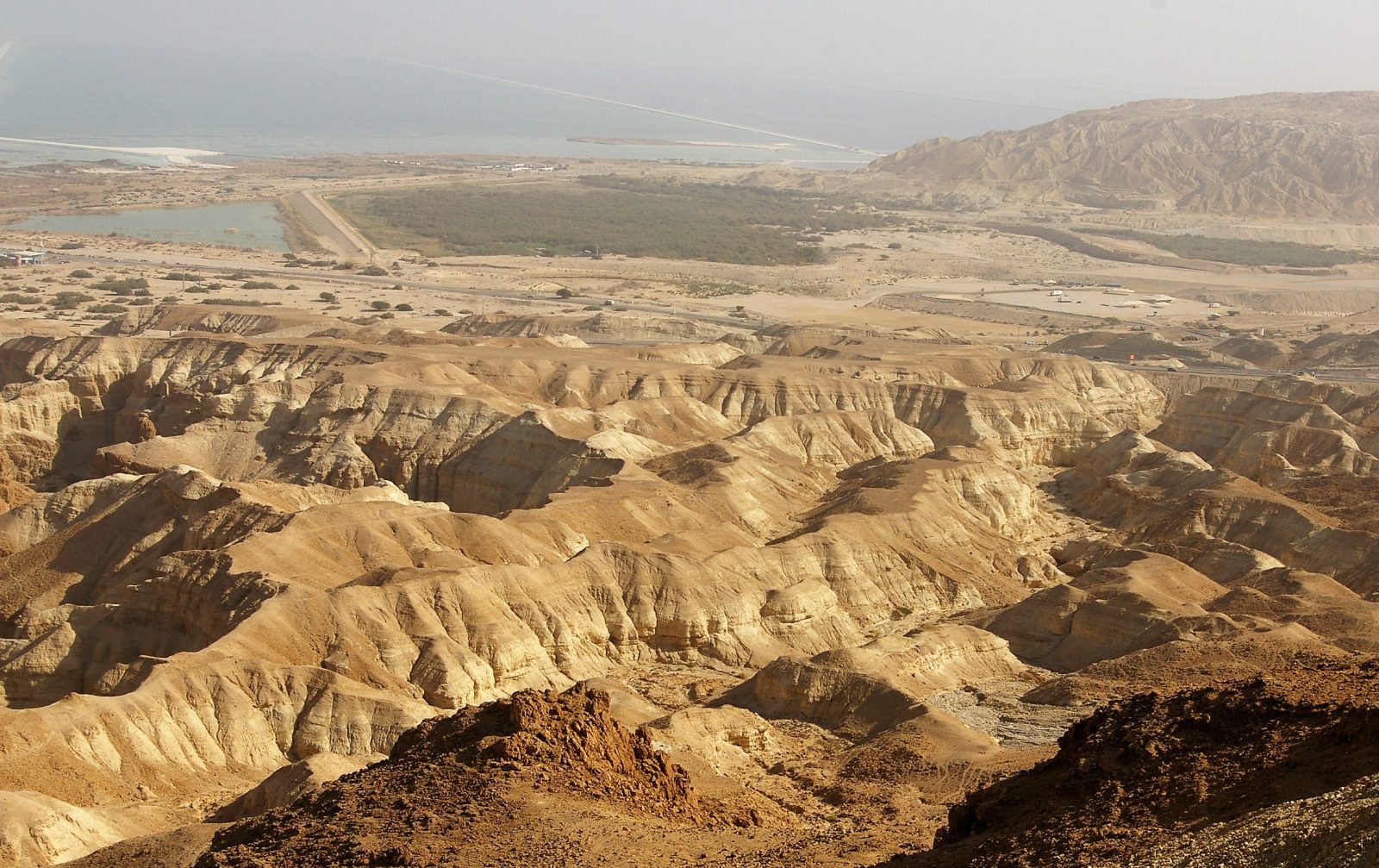

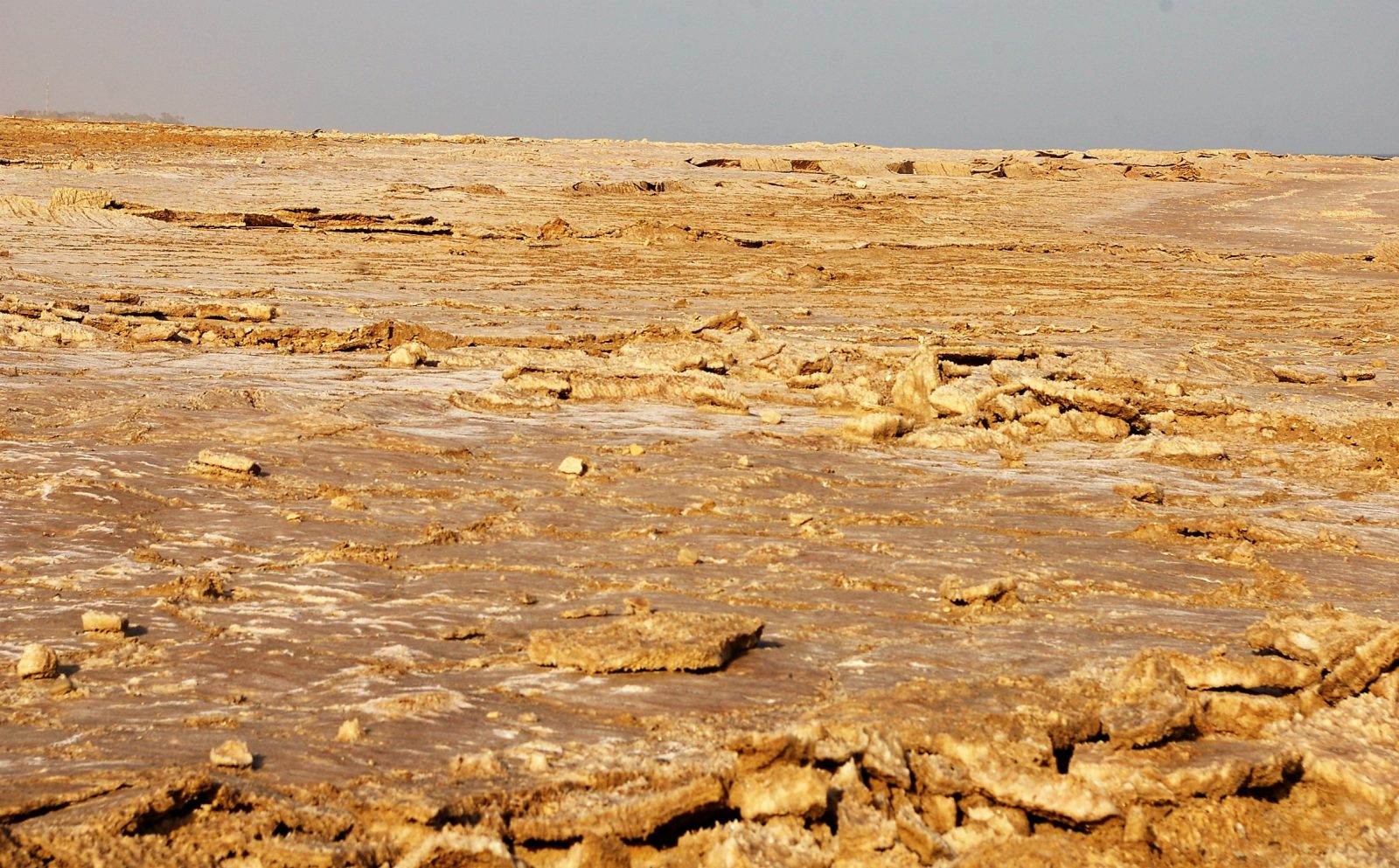
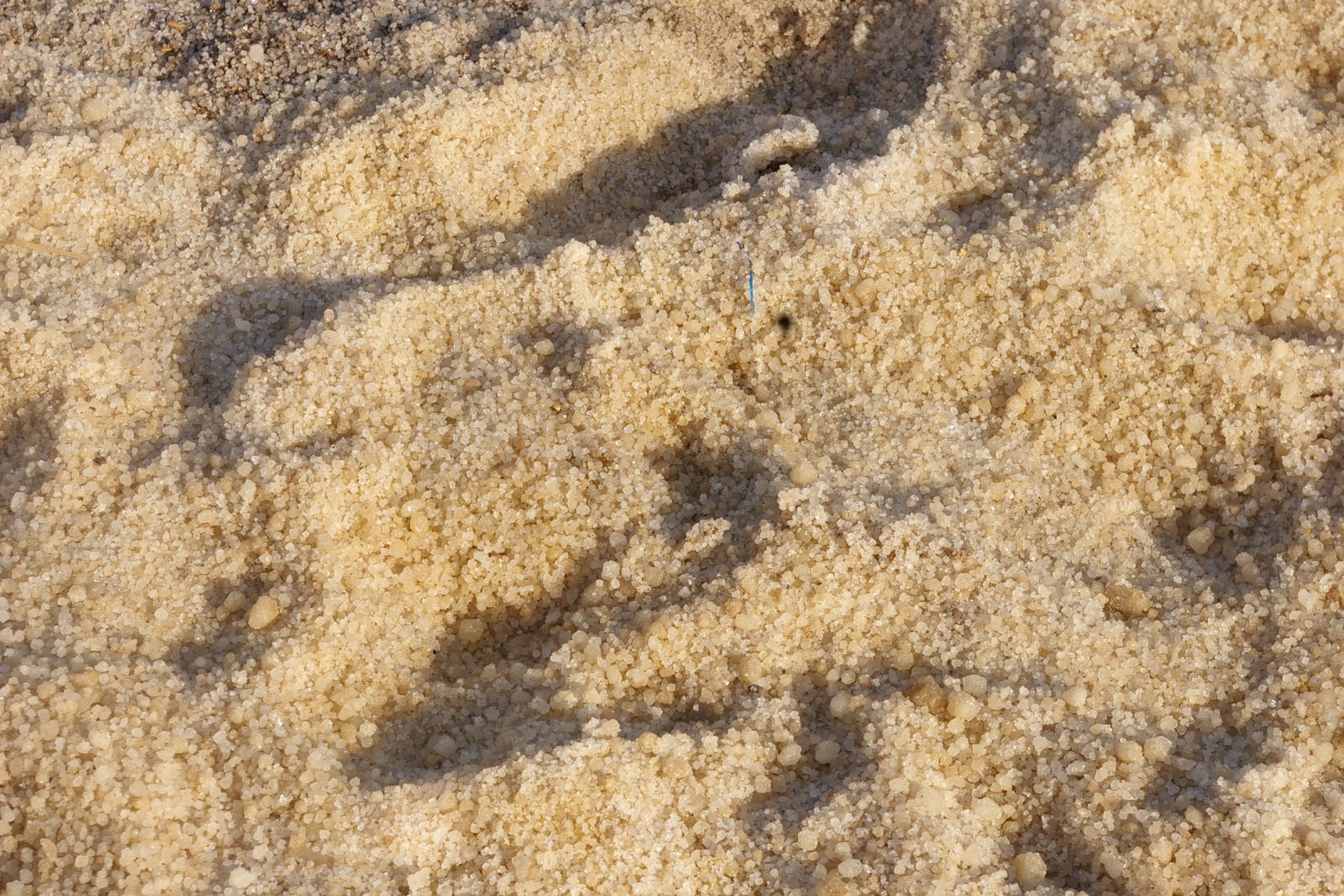
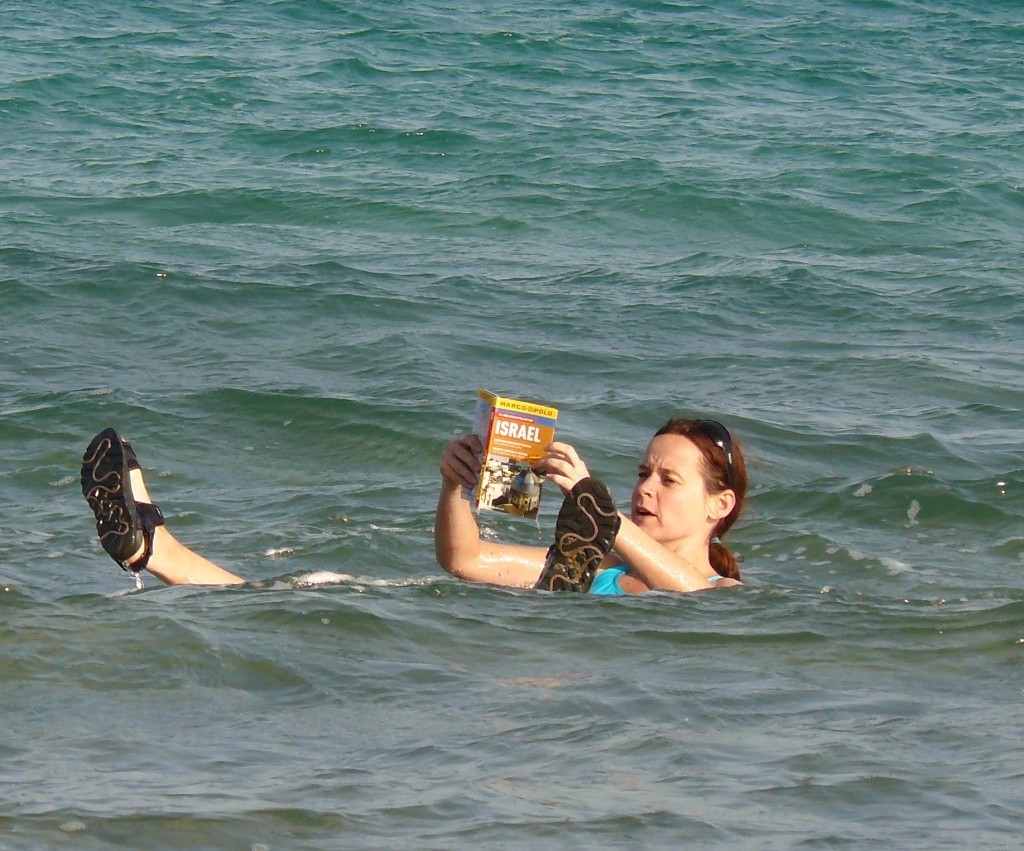
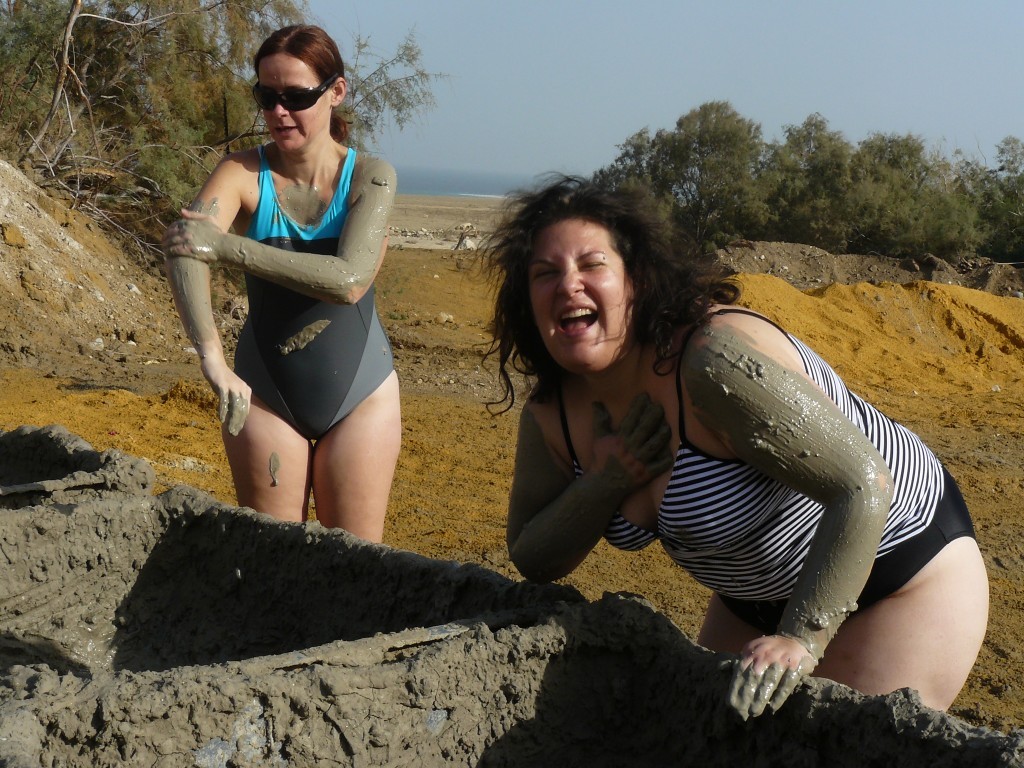
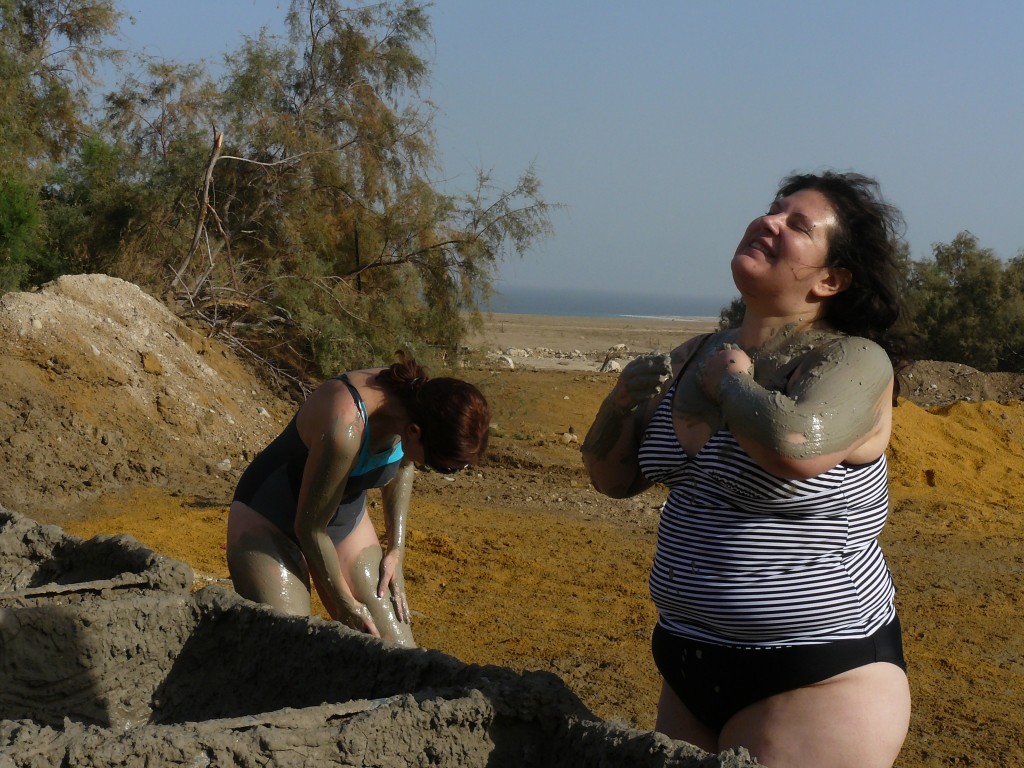
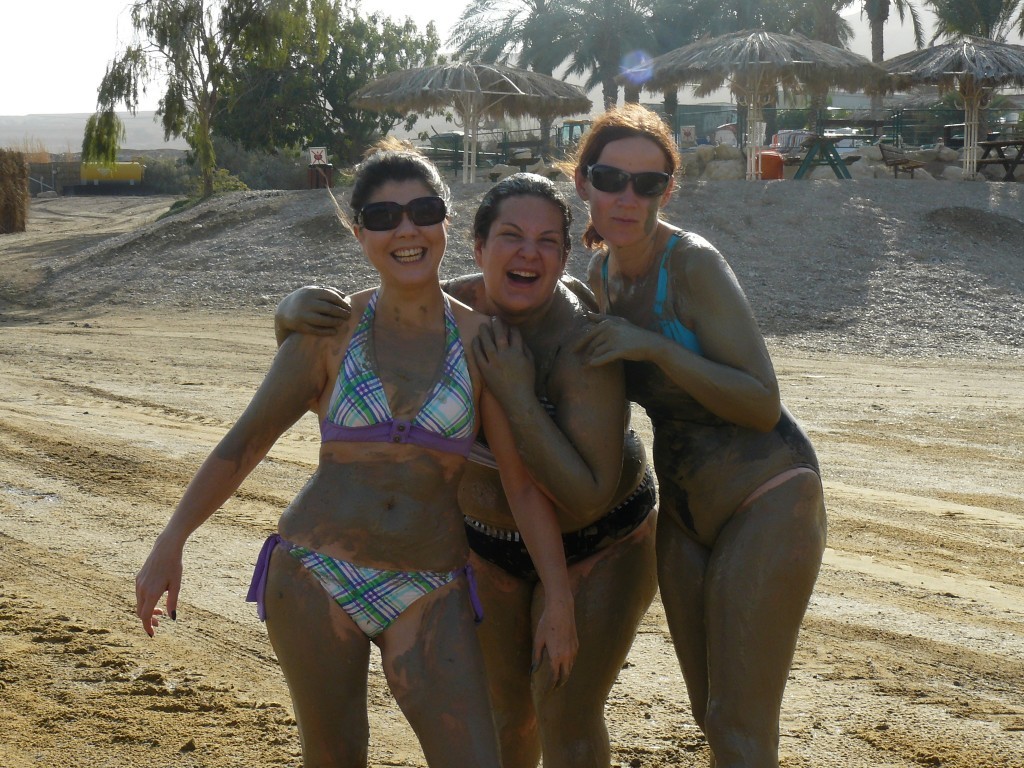



I was disappointed that it wasn’t remote and peaceful but I think we got lucky with the hotel our friends took us road it was quiet and sheltered. My skin the day after seriously felt the softest ever but I didn’t use any mud. I would like to try the east side, I think it is quieter
Yes, I’d like to go back maybe on the Jordan side, so see what it looks like there. 🙂
sorry to here that it wasn’t all that great. Here on the Jordan side, you can just go down to the shore (i wouldn’t really call it a beach, but its where the land meets the sea!) and head straight in, if you are prepared to do a little digging at the waters edge you’ll find the mud – usually a lot better stuff than you find in the bins at the spas! and by digging a mean just under the top layers of salt that are in the very shallow water, you don’t have to go with a shovel! However, because of the oil and salt there does tend to be a lot of flies in the area, so we recommend going to a spa or private beach club where they use smoke and sprays in the evenings to keep the amount of flies down. also if you are at one of the beach clubs you can have a shower afterwards – so you don’t go home salty and smelly! If you ever fancy trying it again (I highly recommend it!) hy not try it on the other shore in Jordan. 🙂
I might indeed! Thanks for the tip! 🙂
I swam, I mean floated in the Dead Sea a few years ago! It was a fantastic experience and would LOVE to go back sometime. We didn’t have enough time to cover ourselves in the mud, but hopefully I’ll get another chance to do so! 🙂
Love the photos! I am hoping to do this one day, one and a lifetime experience!
So beautiful. I can’t wait to go there and float just like that picture! I wonder if there’s somewhere along the Dead Sea that has calmer water. 🙂
Ow, I also thought taking a mud bath would be more glamorous! 🙂 Still, it looks like a lot of fun. I’ve been to the dead Sea once, but it was such a long time ago I can hardly remember the surroundings (we’re talking at least 15 years ago!), except that floating wasn’t as easy as it looked. Would love to go back, especially when looking at your pictures!
I definitely want to go to the Dead Sea sometime! I imagined lush beaches too for some reason…
Looks like you had such a great time. Thanks for sharing the experience. Definitely makes me want to go!
I’ve never been to the Dead Sea! I really want to now, after seeing you experience. I don’t really like the salt water in the eyes thing (sounds dreadful), but I’d do it for the photo op. 😀
http://www.coquettishmish.com